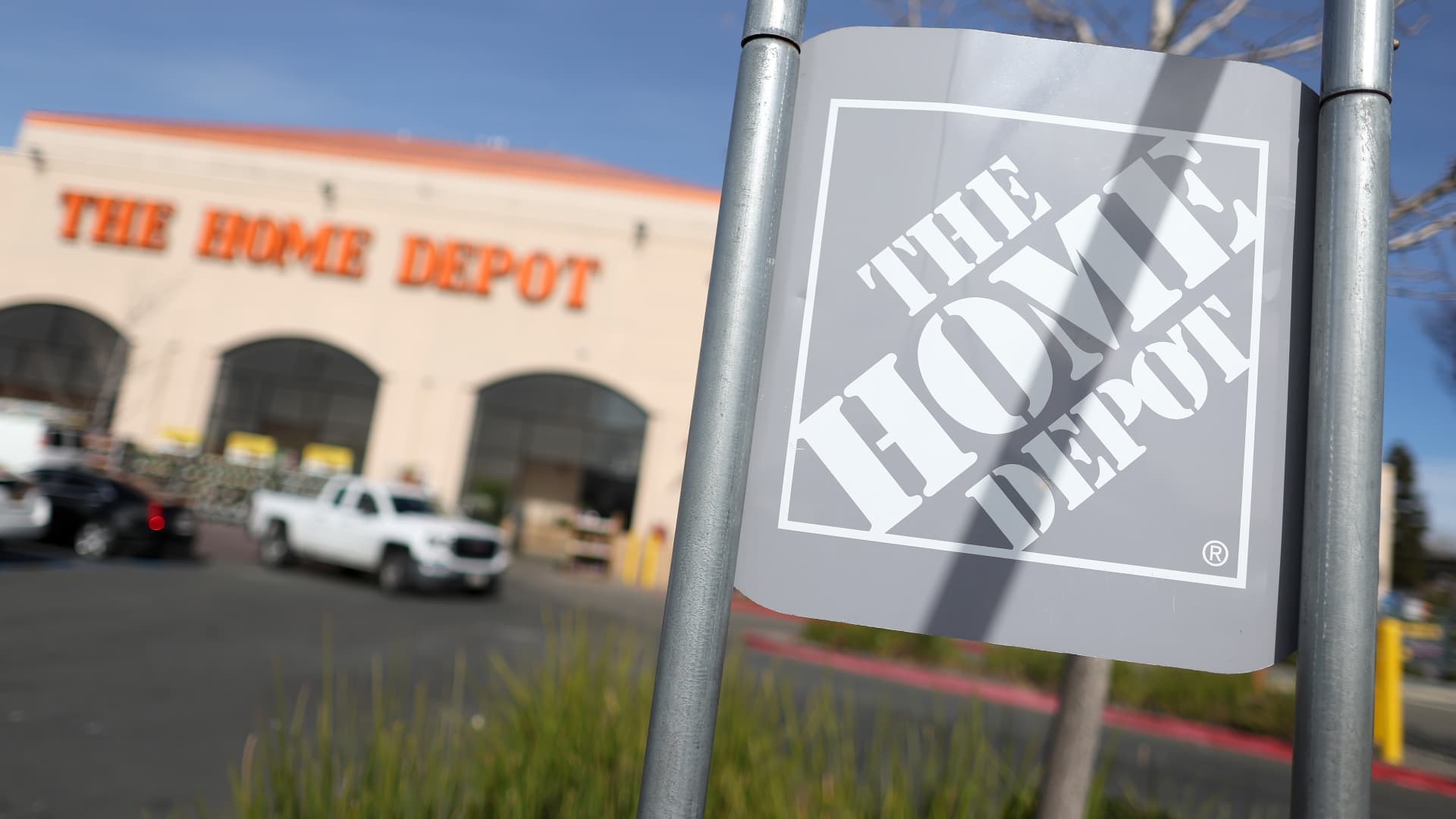Home Depot topped earnings expectations on Tuesday, but posted a 2% year-over-year sales decline as customers remained wary of big purchases and major projects.
It marked the first time in three quarters that the company beat Wall Street’s revenue expectations.
Yet the Atlanta-based home improvement retailer reiterated its muted forecast for the fiscal year despite the beat, saying it still expects sales and comparable sales to decline between 2% and 5% compared with the year-ago period. It had lowered the forecast last quarter.
In an interview on Tuesday, Chief Financial Officer Richard McPhail said the company has seen “continued caution on the part of consumers when it comes to larger ticket, more discretionary spending.” He said in some cases, homeowners already made those bigger purchases during the pandemic. In other instances, they are likely deferring them because of higher interest rates.
McPhail said key pandemic dynamics are reversing, too. Transportation costs have dropped. Vendors aren’t coming to Home Depot with as many requests for price increases. He added that supply-chain disruption is “largely behind us.”
“We don’t expect to see meaningful inflation in the second half of the year,” McPhail said.
Here’s what the retailer reported for the three-month period that ended July 30 compared with what Wall Street was anticipating, based on a survey of analysts by Refinitiv:
- Earnings per share: $4.65 vs. $4.45 expected
- Revenue: $42.92 billion vs. $42.23 billion expected
The company reported fiscal second-quarter net income of $4.66 billion, or $4.65 per share, down from $5.17 billion, or $5.05 per share, a year earlier. Revenue fell year-over-year from $43.79 billion.
The retailer’s shares were roughly flat in premarket trading.
Home Depot faces a more challenging sales backdrop, as demand for do-it-yourself projects and contractors normalizes after nearly three years of unusually high demand. The company’s CFO Richard McPhail told investors earlier this year that 2023 would mark a year of moderation, as customers returned to more typical pre-pandemic patterns.
On top of that, the retailer faces a weakening housing market, inflation and consumers’ shift to spending more on services instead of goods.
But McPhail said Home Depot’s typical customers are in good financial shape, thanks in part to sharp home equity gains during Covid. They are still hiring contractors, but for more small projects.
“Generally speaking, the homeowner customer — who is really our customer — remains healthy and remains engaged in home improvement,” he said.
Cooling inflation has also shown up in Home Depot’s sales trends. McPhail said the company has not seen deflation, but is now in a period of “price settling.” Home Depot has lowered retail prices in some cases, he said. The reductions are not concentrated in any particular category.
Home Depot noticed that as the company’s ticket, or typical amount spent by a customer, decreased, its number of shopper transactions began to rise, he said.
Comparable sales in the U.S. and company-wide declined by 2% in the fiscal second quarter. It marked the third straight quarter of falling comparable U.S. sales.
Total customer transactions fell by about 2% compared with the year-ago period, but the average ticket was roughly flat at $90.07.
Home Depot said in its earnings release that the company’s board of directors approved $15 billion in share buybacks, which will take effect Tuesday.
As of Monday’s close, Home Depot’s shares are up 4% so far this year. That’s trailed behind the nearly 17% gain of the S&P 500. Shares closed at $329.95 on Monday, down less than 1%.
